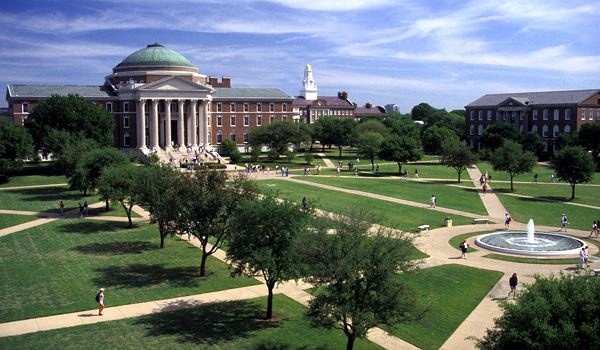
In softer numbers, the results heavily favor Kellogg, As you’d expect, Booth clobbers Kellogg in the areas of international course experience, defined as classroom hours conducted outside the home country, with Booth ranking 33rd against Kellogg’s 62nd according to the Financial Times. However, when EMBA graduates are polled, Kellogg scores higher than Booth in nearly every survey metric gauged by The Economist. They include school culture (4.72 vs. 4.58), facility quality (4.74 vs. 4.56), course content (4.72 vs. 4.58). course relevance (4.85 vs. 4.68), and alumni helpfulness (4.62 vs. 4.43). In terms of faculty and teaching quality, the aggregate scores of Booth and Kellogg EMBAs are nearly identical, with Booth grads reporting slightly higher satisfaction. At the same time, Kellogg EMBAs feel they achieved their aims to a slightly higher extent (78% vs. 75%) according to the Financial TImes.
Not a huge difference, but consistent and noticeable nonetheless. Does this mean Kellogg should be ranked #1? Not necessarily. The end of the Bloomberg Businessweek ranking evens the playing field a bit. Technically, Businessweek’s EMBA director survey, which favored Kellogg last time, is duplicated by U.S. News’ own survey for its EMBA ranking (which is based solely on surveys from deans and MBA program directors). Even more, the student satisfaction component is covered by The Economist (and the Financial Times to a far lesser extent). In other words, student and academic sentiment won’t be counted twice anymore in P&Q’s ranking, giving greater weight to quantitative metrics like post-graduation salaries (which themselves are counted twice considering their importance in both the Financial Times’ and The Economist’s rankings).
Regardless, the difference between the schools is nominal. Just a one index point swing, such as Booth and Kellogg swapping the 2nd and 3rd place rankings in the U.S. News ranking, would mean the schools would’ve tied for first. That’s how close the schools really are. Both are rigorous academic strongholds, which Booth considered slightly stronger in that area. Both also intensely lean on a team-based model, where Kellogg maintains a slight edge. In the end, Booth ranked three spots higher than Kellogg in with the Financial Times, which rewards schools in obscure areas where Booth excels, particularly faculty research and international students, faculty, and board members. That was where Booth squeaked out the win.

New York City’s Columbia University
A NEW UPDATED METHODOLOGY
While Businessweek’s departure streamlined the P&Q ranking, it also raised the stakes for schools. In 2014, 34 American programs were found in two or more rankings. That number dropped to 20 programs with P&Q’s American EMBA ranking, where each of the three rankings are given one-third weight. With one fewer ranking, each list takes on more weight than ever before. In the process, EMBA programs are heavily punished for being excluded from any of the three rankings for whatever reason–even when they choose not to participate.
It also created a dynamic where three clearly identifiable ranking tiers appear. The first tier consists of programs that are found on all three rankings and scored top 20 finishes in each of them. The second tier programs, which ranked from 11-21, include EMBA programs found in two rankings. The remaining 30 EMBA programs, however, were included in one ranking. In other words, consistency is rewarded, with anomalies mitigated (such as Thunderbird ranking as the second-best American EMBA program in the FT rankings or the suspiciously-high number of Jesuit EMBA programs in the U.S. News rankings). That said, the bottom tier also comes with some quirkiness, such as a school like St. Joseph’s ranking higher than Virginia or Arizona State due to the (suspiciously) high number of citations it received from business school administrators in the U.S. News rankings.
In narrowing its scope, P&Q also decided to rank only American EMBA programs for this exercise. The big reason: U.S. News doesn’t include acclaimed international programs such as INSEAD, IE Business School and Oxford. By including them, P&Q would penalize them on a methodology, saddling them with an inherent disadvantage from the get-go. True to form, P&Q also conducts its own separate ranking on joint EMBA programs, such as partnerships like Trium and Washington University-Fudan University. As a result, America EMBA programs don’t derive any benefit (or penalty) for their international partnerships.
Hence, P&Q amended the FT and Economist rankings as if they only included American EMBA programs in creating its index (The same is true of P&Q’s 2014 rankings). As a result, the previous P&Q ranking, along with the 2015 Economist and 2016 Financial Times rankings, are adjusted to only include American programs. Another consequence: American EMBA programs earned higher index scores than they normally would with the exclusion of international EMBA programs – making being ranked across the board all the more important.
NYU AND MICHIGAN CLIMB INTO TOP FIVE

SMU’s Cox School of Business
As a result, this year’s P&Q rankings included some substantive realignments beyond Wharton and Duke. NYU Stern, previously ranked 11th among American MBA programs, vaulted to 4th overall. Previously ranked 5th by P&Q in its 2012 and 2013 global MBA rankings, Stern’s return was aided by its inclusion in the 2015 Economist rankings, where it placed 5th among American programs after being previously unranked.
The University of Michigan (Ross) climbed four spots from 2014, capitalizing on falls from Wharton, Duke, North Carolina, and USC (which stemmed from not being included in all rankings). This also opened the door for Cornell University (Johnson), University of Texas (McCombs), and SMU (Cox), with the trio all climbing into P&Q’s Top 10. Similarly, Georgetown (+17), the University of Georgia (+16), the University of Pittsburgh (+20), and Rice (+7) also substantive gains over P&Q’s previous ranking, with each finding their way into P&Q’s Top 20.
At the opposite extreme, several schools lost ground in P&Q’s newest EMBA ranking. Besides Kenan-Flagler and Marshall, Ohio State suffered the worst spill, tumbling down to 34th. The culprit? Fisher fell out of the Financial Times ranking, after finishing 50th worldwide just two years ago. The same is true of Arizona State. Ranked 28th globally by the Financial Times just two years ago, the school’s domestic program fell out of the Financial Times’ EMBA ranking (though Carey’s partnership with the Shanghai National Accounting Institute (SNAI) ranked 35th among all EMBA programs in the Financial Times ranking). Miami University (-18) and the University of Rochester also endured major falls, which can be tied to losing their ranking with the Financial Times and The Economist respectively.
Several schools also joined P&Q’s EMBA ranking, though none in the Top 20. This year’s biggest entrants included the Yale School of Management, the University of California-Berkeley (Haas), MIT (Sloan), and the University of Virginia (Darden). Notably, Yale debuted as the #4 American EMBA program with The Economist, while the other schools were ranked by U.S. News & World Report.
(Go To Next Page To See Ranking)
DON’T MISS: The World’s Big Ticket EMBA Degrees





Questions about this article? Email us or leave a comment below.